Ventilation and breathing rate reveal new insights into athletic performance
Introduction
Ventilation is the missing link in many training prescriptions. In the ER, one of the first things checked is your vitals: not just heart rate, but more importantly, your breathing. And it's not just the ER: performance labs rely on metabolic carts to measure ventilation, assess metabolic rate, and pinpoint ventilatory thresholds and VO₂max.
Fun fact: Tymewear was actually born in a metabolic lab while studying soldiers' energy output. But that’s a story for another time.
Below are a few powerful ways ventilation data can transform your training:
Measuring Your Ventilatory Thresholds
The most valuable benefit of tracking ventilation is the ability to pinpoint your ventilatory thresholds—VT1, Balance Point, and VT2. These thresholds are the cornerstone of endurance training, as they mark the transitions between different energy systems and training zones.
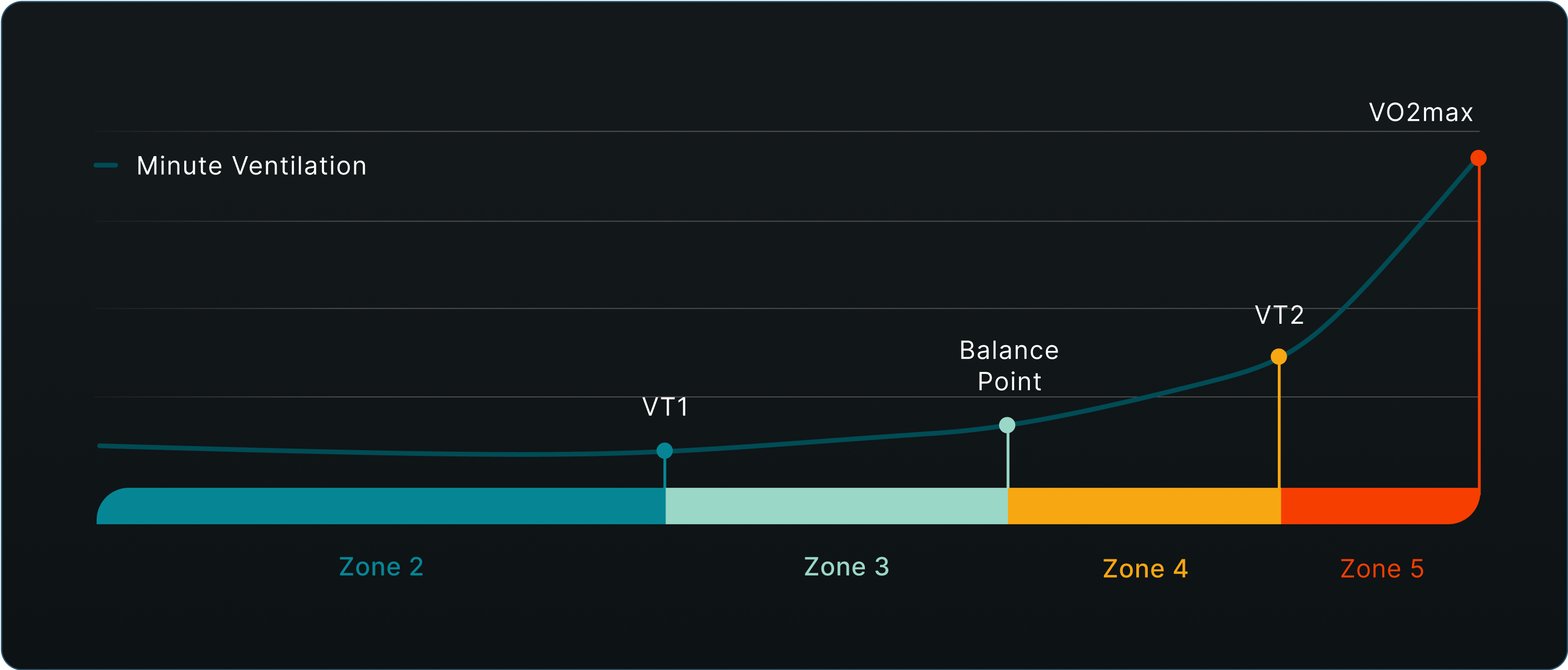
Targeting Thresholds in Real-World Training
The limitation of lab testing is clear—it's confined to the lab. You walk out with a snapshot of your thresholds at specific power or heart rate values. But those values aren't static. They can shift day to day, or even during the same workout.
A study by Julian D. Stevenson et al. showed that to maintain the same physiological state during long exercise sessions, athletes must reduce power output over time. Heart rate drifts upward, making it an unreliable guide. But ventilation stays stable, making it the ideal marker for real-time training intensity.
Now, with wearable technology that tracks ventilation accurately in the field, you can train precisely at your threshold—wherever and whenever you want.
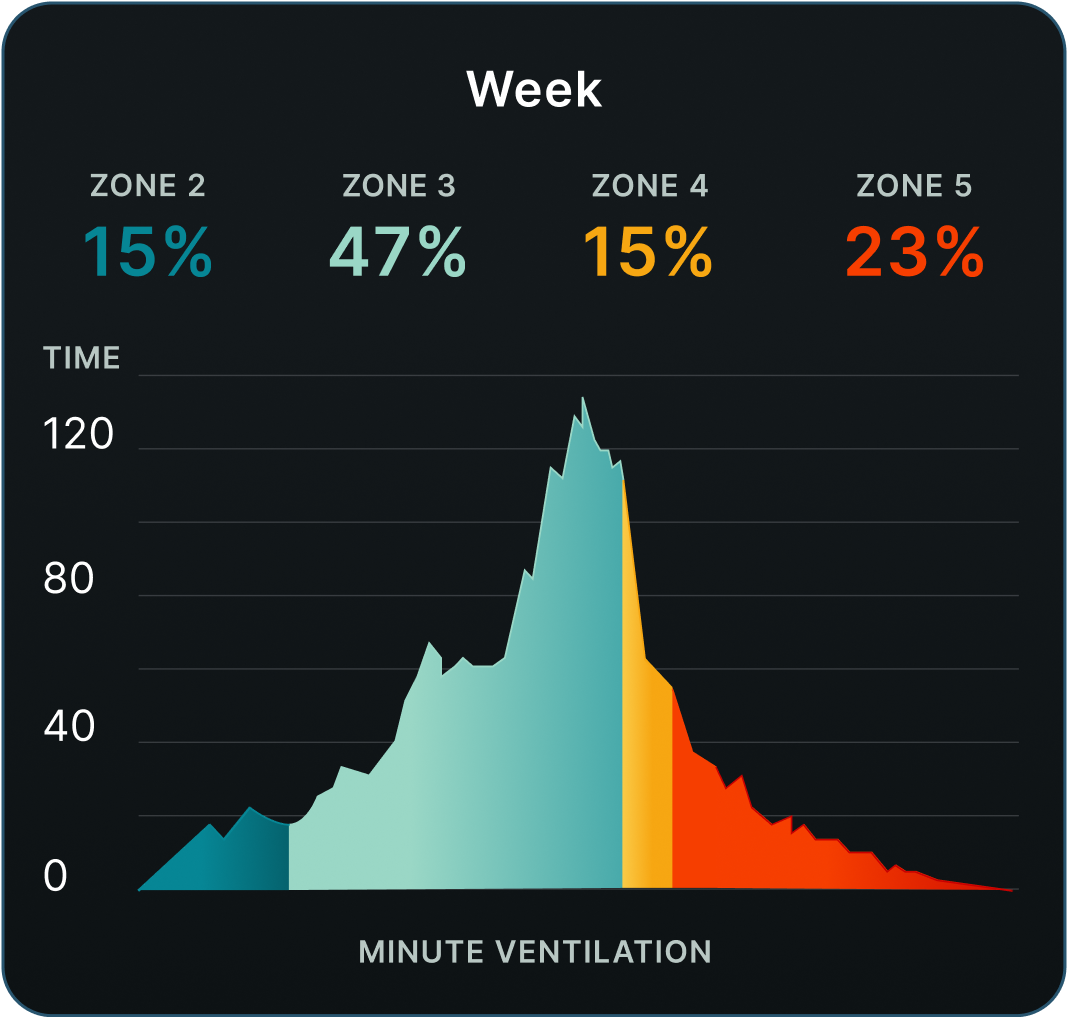
Internal Load: What Breathing Rate Reveals
A lesser-known finding from the Stevenson study: while ventilation (VE) stayed stable at VT1 over two hours, breathing rate (BR) climbed steadily. Given that VE = BR × tidal volume (the amount of air per breath), as BR rose, tidal volume dropped to keep VE steady.
This matters. It reveals how breathing rate can signal accumulating internal load. Jogging for 30 minutes might feel easy, but try it for 24 hours—even at the same VE. That's where fatigue builds. So how do you measure that rising internal load?
Breathing rate is a great proxy for perceived exertion and therefore internal load. Unlike heart rate, which eventually plateaus, BR continues rising as your body works harder. That makes it a more sensitive tool for gauging internal stress and fatigue
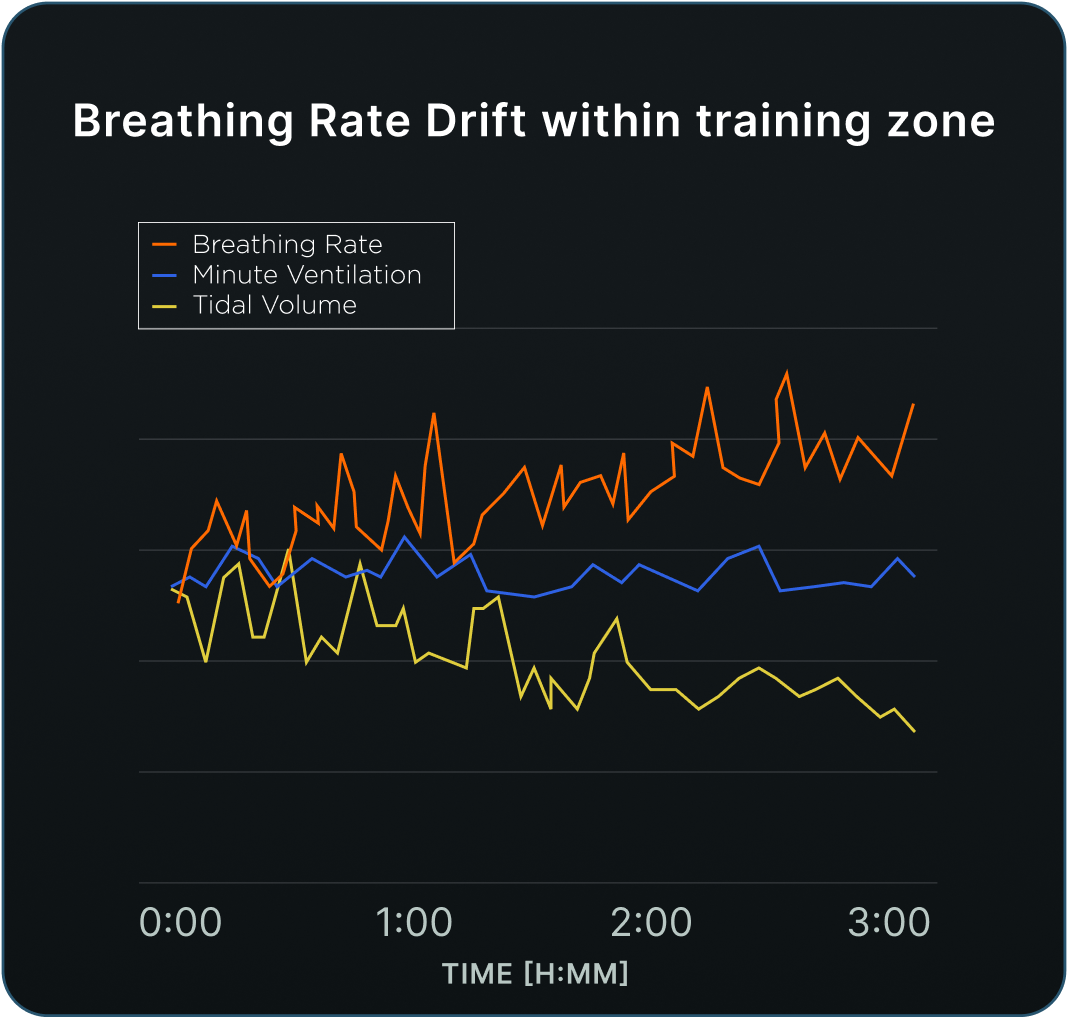
The Mobilization Index: Stress, Fatigue, and Durability
Dr. Stephen Seiler has been working with Tymewear’s wearable tech—first with the smart shirt, now the chest strap—to explore how ventilation guides training more effectively.
One of his key insights is the Mobilization Index, which uses two reserves:
Heart Rate Reserve (HRR): from resting HR to max HR
Breathing Rate Reserve (BRR): from resting BR to max BR
By expressing live HR and BR as a percentage of their respective reserves, Seiler discovered a powerful indicator of stress:
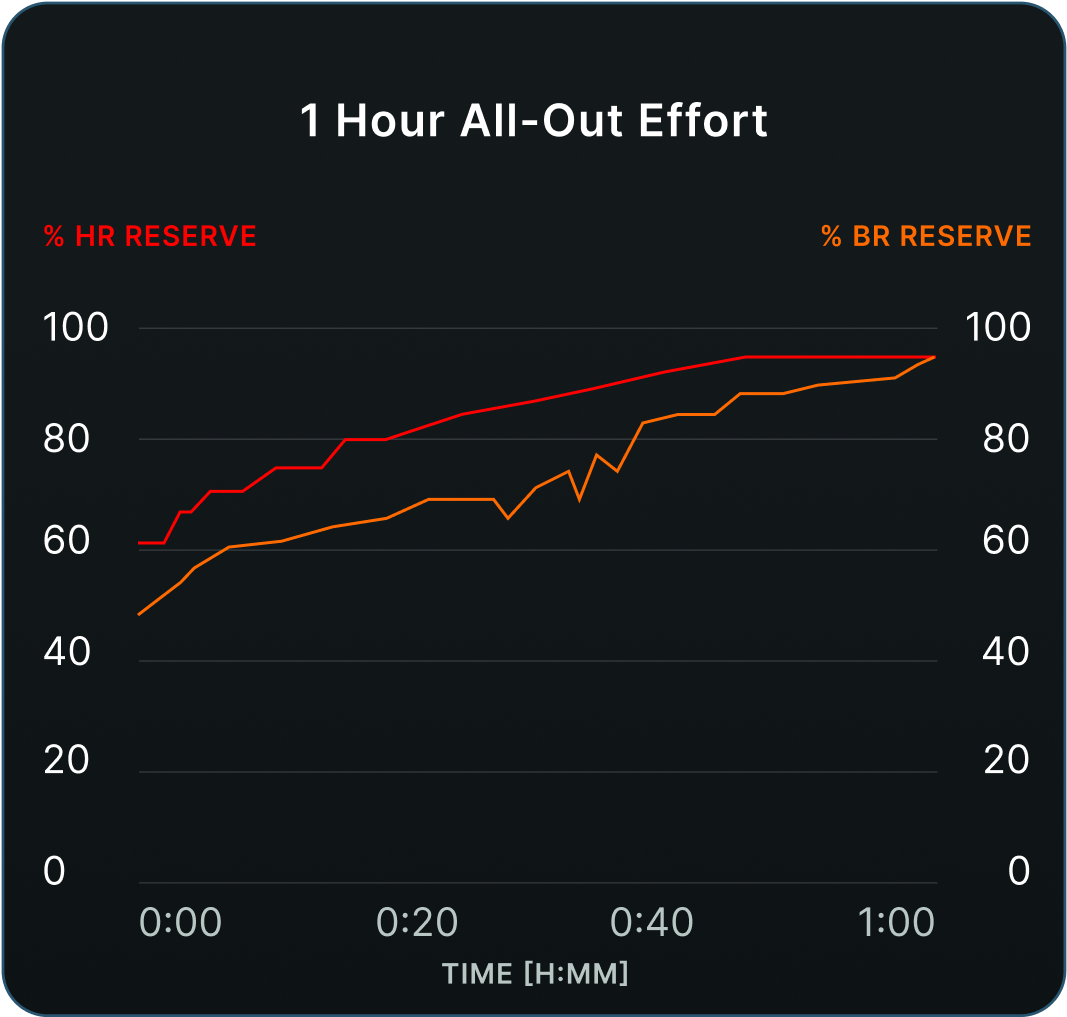
“Once BR (% of BRR) reaches HR (% of HRR), the athlete is cooked.”
This crossover point is surprisingly robust. In a high-intensity workout, it might occur when BR catches up with HR and both are pushing 95%—that’s when you know you’ve hit your limit.
The real kicker? During a long, low-intensity session, you might start with HR around 70% of HRR and BR at 40% BRR. Over an hour, two, or four, BR keeps climbing. When it finally matches HR on the reserve scale (say, both at 75%), that’s your durability ceiling. You’re done.
Case Study: The Backyard Ultra
One of the most counterintuitive examples of the Mobilization Index comes from a backyard ultra run. A backyard ultra marathon is a running event where the runners have 1 hour to run a lap that is 6.7 km long. If they finish before the hour mark they rest until the next lap starts, an hour after the previous one.
If the athlete only measured heart rate, they might think their stress was decreasing with each lap. This completely contradicted how they actually felt. Thankfully, they also measured breathing rate during the race. The BR shows the true story of the race as it kept creeping up until it reached almost the same level as the HR, in terms of % of the reserve, when the athlete was almost completely out of gas in the final lap.
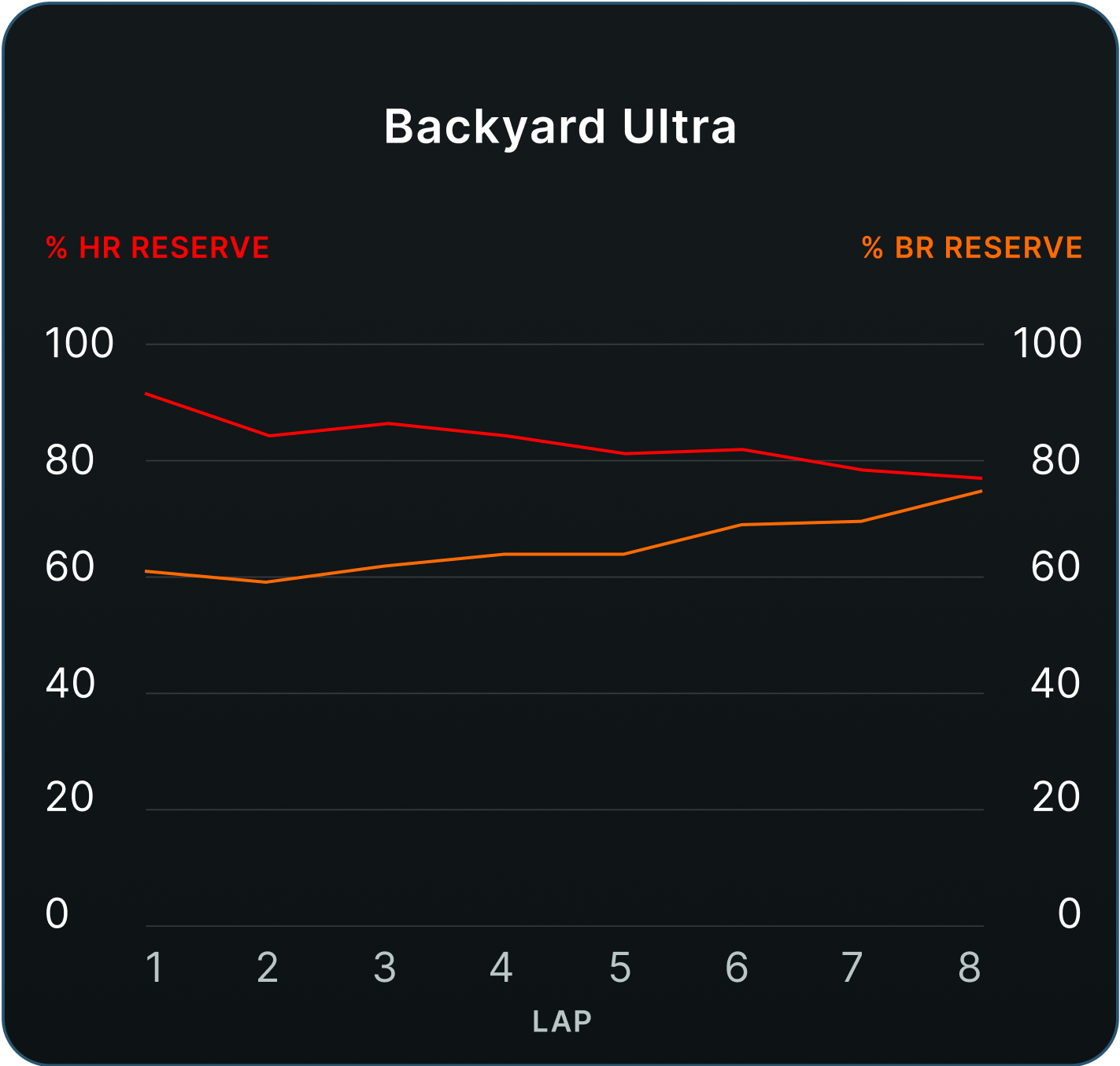
Heart rate is tightly linked to oxygen demand, which in this case reflected the athlete's pace. As the event wore on, their pace dropped slightly and they took less rest between laps. Because of the backyard ultra format, the athlete was able to eat, drink, and rest at the start of each hour, which helped mitigate any heart rate drift during the race. This led to a decreasing average HR per lap—even as overall stress kept rising.
Summary
In summary, breathing isn’t just a basic vital sign, it’s a goldmine of physiological insight. Ventilation and breathing rate are redefining how we train, recover, and understand internal load. And thanks to modern wearables, these insights are no longer locked in labs, they’re available on your next run and ride.
